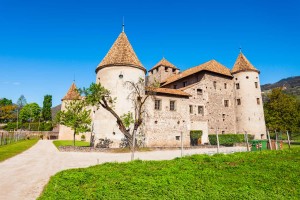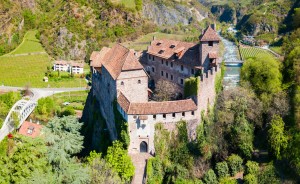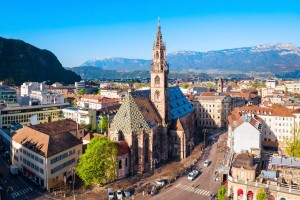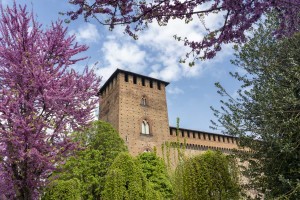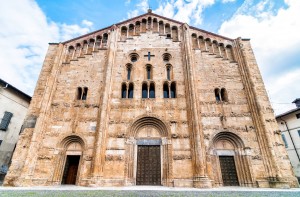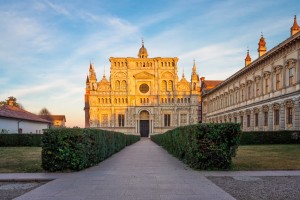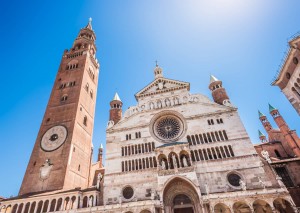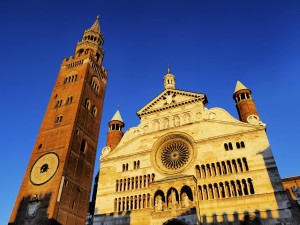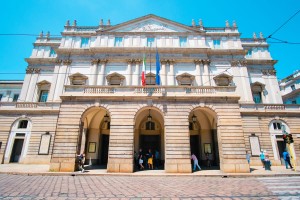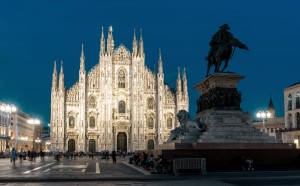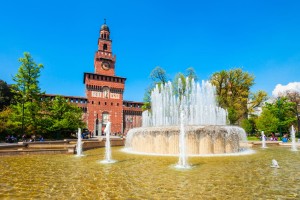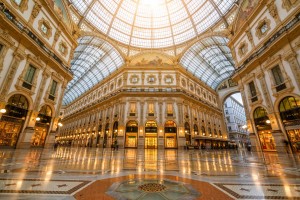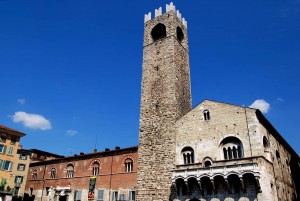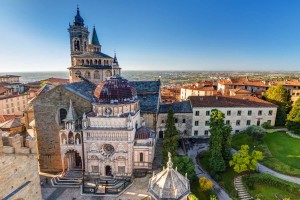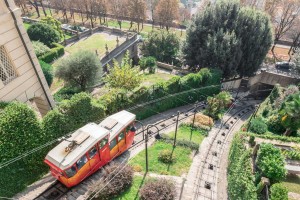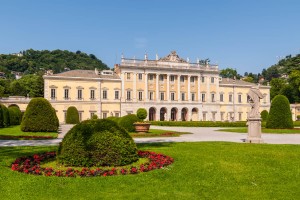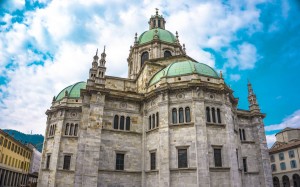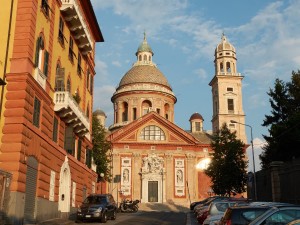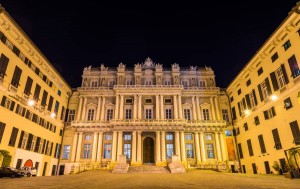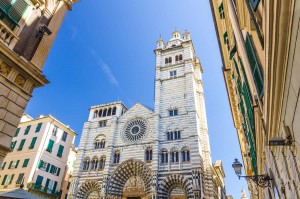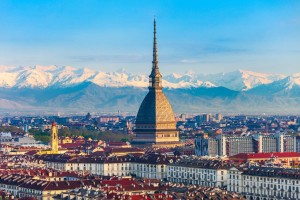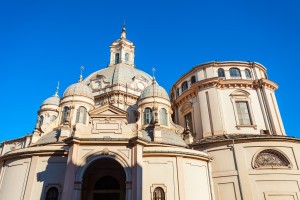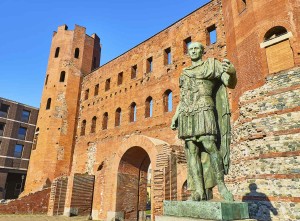Val d’Adige opens up south of the imposing rock giants of the Dolomites. Surrounded by Monte Calisio, Marzola, Becco di Filadonna, Monte Bondone and Paganella, the city of arts Trento invites you into the heart of a former prince-bishopric that was later turned into an enormous fortress. The capital of Trentino-Alto Adige now documents its gripping history in countless museums and at thrilling sites between the stunning old centre and scenic hills. Ranging from early-Christian ruins to modern art, from the roots of counter-reformation to the beginning of aviation, you get to look forward to exciting highlights as far as the eye can see. Find out here what you absolutely must see and what you should know about Trento.
Where the counter-reformation began
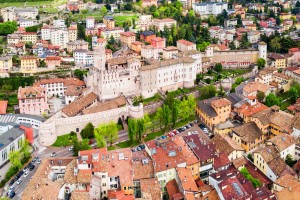
©Bigstock.com/saiko3p
It took Trento fairly long to gain historic significance, until around the 16th century to be precise. However, that doesn’t mean that the region was completely empty before that. Early settlements in Val d’Adige were recorded in prehistoric times; Trento itself was founded by the Celts and later conquered by the Romans. They gave it the name “Tridentum” (“Three Teeth”). Roads were expanded and turned into the central transport axis for conquering the alpine area. Various cultures ruled over the area after the fall of the Western Roman Empire until all secular powers were given to the bishops in 1004 where they would remain for eight centuries.
The Council of Trento (1545 of 1563) laid the foundation for the city’s historic significance and ignited the counter-reformation. Most of Trento was redesigned in Renaissance style during this era, baroque elements followed in later times. The “Reichsdeputationshauptschluss” (“Imperial Recess”) of 1803 formally put an end to the Bishopric and annexed it into the kingdoms of Bavaria, Italy and Austria-Hungary over the following decades. A full upgrade of the fortress facilities in the 1870s was supposed to protect the city from military attacks, which would come during the First World War. Trento and the surrounding region saw brutal combat. The entire Trentino fell to Italy as part of the Treaty of Saint-Germain-en-Laye. Nowadays, the region is among the wealthiest in the entire country.
Cathedral Square
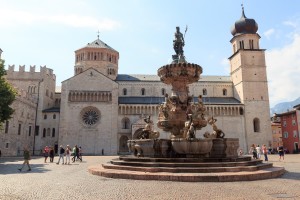
©Bigstock.com/johannes86
The first stop of your city tour leads you to the heart of Trento. Cathedral Square is home of the former centre of power of the huge prince-bishopric. Several monumental buildings and an equally spectacular foundation await you on and around the square:
- Cathedral San Vigilio: The Council of Trento was held in the Duomo. Important decrees that formed the foundation of the counter-reformation were passed here. There had been an early-Christian basilica here as early as the late 4th It predominantly used to be an ancient place of ceremonial gatherings. Bishop Federico Vanga had a Romanesque cathedral built starting in 1212. The ostentatious design of the façade with pilasters, towers and blind arcades, imposing windows and statues immediately catches your eye. The baroque canopy above the main altar and the classic Christian frescoes on the north wall of the transept bear witness to the cathedral’s eventful history.
- Palazzo Pretorio: The Bishop’s Palace “moved” to Cathedral Square, right next to today’s San Vigilio, in the 11th Restorations between 1953 and 1964 unearthed the original Romanesque structure. The palace with the impressive belltower now houses the Museo Diocesano Tridentino.
- Fountain of Neptune: Positioned almost in the centre of Cathedral Square, this baroque fountain has its origin between 1767 and 1769. Andrea Malfatti’s bronze Neptune statue, however, is a replica. You can find the stone original by Francesco Antonio Giongo in the courtyard of city hall.
Trento’s museums
There’s a surprisingly high number of museums in every corner of Trento covering a wide variety of different eras and topics. Old masters collide with modern art, alpine achievements go hand in hand with aviation. We highly recommend you visit the following five facilities during your next stay.
- Museo Diocesano Tridentino: The former’s Bishop’s Palace Palazzo Pretorio now houses this collection of art and culture with works spanning from the 11th to the 19th During a museum tour you can see the adjacent cathedral from above and view the remains of Porta Veronensis. Even though the archaeological excavation site of the early-Christian basilica is part of the Museo, it can only be accessed via San Vigilio.
- MART: The Museo d’arte moderna e contemporanea di Trento e Rovereto (MART) was founded in 2002 on two different sites. Aside from the main building in Rovereto, approx. half an hour away by car, you can check out riveting modern and contemporary art in Trento.
- Museo Nazionale Storico degli Alpini: This museum on the hill Doss Trento acts as some sort of home to the Italian mountain infantry. It was built next to a mausoleum for Trento’s Alpini officers and for the irredentist Cesare Battisti. Gain fascinating insights into the history of various troops specialised in mountain combat.
- Gianni Caproni Museum of Aeronautics: Gianni Caproni spearheaded one of the world’s most important aviation companies in the first half of the 20th The aeronautics engineers started to collect his most important airplane models early on. You get to see important planes from the pioneer area, the two World Wars and the time after both wars.
Other places to see and visit
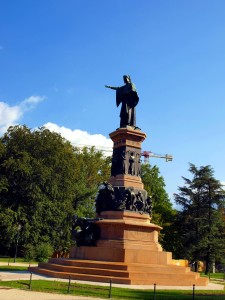
©Bigstock.com/rparys
If you’re at least a little bit like us, you definitely cannot get enough of Trento. Well, we’ve prepared a little something for you:
- Dante Monument: Inspired by the Walther von der Vogelweide statue in Bolzano, Gugliemo Ranzi ensured the support of the authorities for a monument honouring Dante Alighieri in 1889. The bronze statue by Cesare Zocchi depicts the author enthroned above scenes from the Divina Commedia.
- Castello del Buonconsiglio: This lowland castle on a ledge in the old centre used to be the bishop’s see until 1796. The listed and protected Castello is one of Trento’s most important buildings acting, among other things, as an exhibition and memorial site. The art history museum Museo Provinciale d’Arte, the Museo Storico and the Pinacoteca art gallery have found a home behind the castle walls as well.
- Buco di Vela: This facility to seal off the Valle di Rio Vela was established during the extension of the fortifications. A heavy-traffic road led through the archway of the former roadblock until 2004 imposing increasing damage on the fort. The construction of a road tunnel bypass facilitated the restoration of the original structure which now houses a museum of Austro-Hungarian fortress architecture.
From Cathedral Square to the museums to the impressive fortifications – Trento is always worth a visit. A highly exciting city of arts granting numerous insights into its thrilling history and inviting you to go on a plethora of hikes and mountain tours in close proximity awaits you in a place where bishops used to rule an entire region for 800 years. Enjoy your tour across mountains and valleys!
